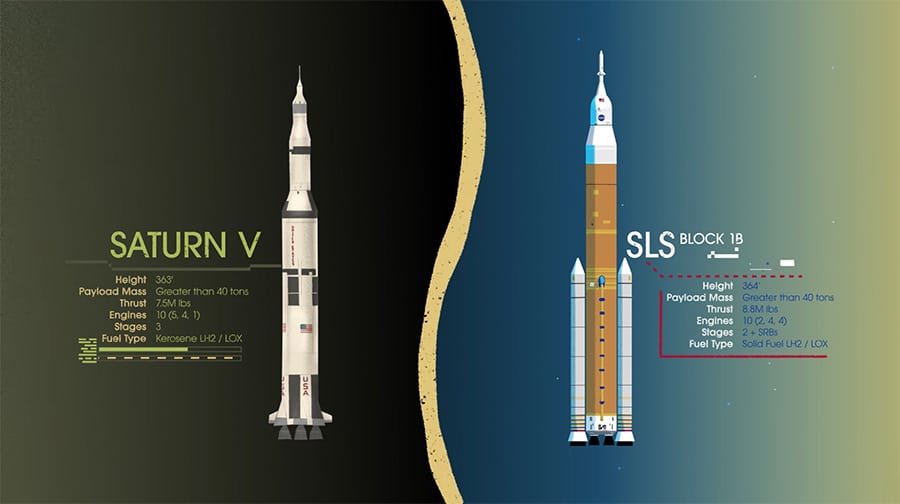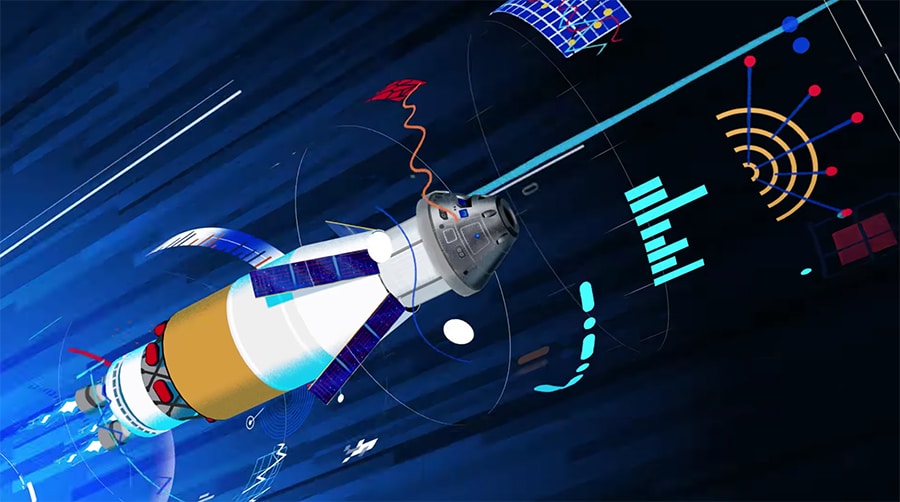Between 1968 and 1972, America launched 9 human missions to the Moon, 6 of which successfully touched down, allowing 12 men to walk on the lunar surface. NASA’s next chapter of lunar exploration, called Artemis, has the task of not just going to the Moon, to create a long-term human presence on and around it, but also to prepare for ever-more-complex human missions to Mars. In short, everything we must be able to do here, we must first do here.
The plan: By 2024, NASA will land the first woman and next man on the Moon, the first step to sustainably working and living on a world other than our home planet by 2028. Star Wars actress Kelly Marie Tran narrates this NASA video introducing the Artemis Mission, named for the Greek goddess who was a huntress and the patron and protector of girls.
Apollo, the Greek god who inspired the name of the 1968-1972 Project Apollo missions to the moon, was Artemis’ twin.
The Artemis Mission will combine the Orion spacecraft, the SLS or Space Launch System, the most powerful rocket in the world, an orbiting lunar outpost called The Gateway, modern lunar landers for human transport, and “Artemis-generation” spacesuits.
But why go to the Moon? Why go to Mars? From NASA:
If we bring together the capabilities and resources of our international and commercial partners to take us forward to the Moon and on to Mars, we will demonstrate to people around the world the power of a unified purpose. It will serve as an unparalleled and inspiring example of what humanity can do when it comes together to achieve a common goal for the common good…
We know the Moon can tell us more about our own planet, and even our own sun. There is so much more to learn – knowledge we can acquire with a sustained human and robotic presence on the Moon.
No doubt the technology developed for the mission might also find uses here on Earth. Related reading from NASA JPL: 20 Inventions We Wouldn’t Have Without Space Travel.
Learn more about the mission from NASA’s Artemis site.
Watch these videos next: Tour of the Moon (our One and Only), a 4K LRO moon visualization set to Clair de Lune, and videos about the Apollo Program including Neil Armstrong’s First Steps on the Moon.
Bonus: Le voyage dans la lune (1902) by Georges Méliès.
h/t Kottke.
Curated, kid-friendly, independently-published. Support this mission by becoming a sustaining member today.





